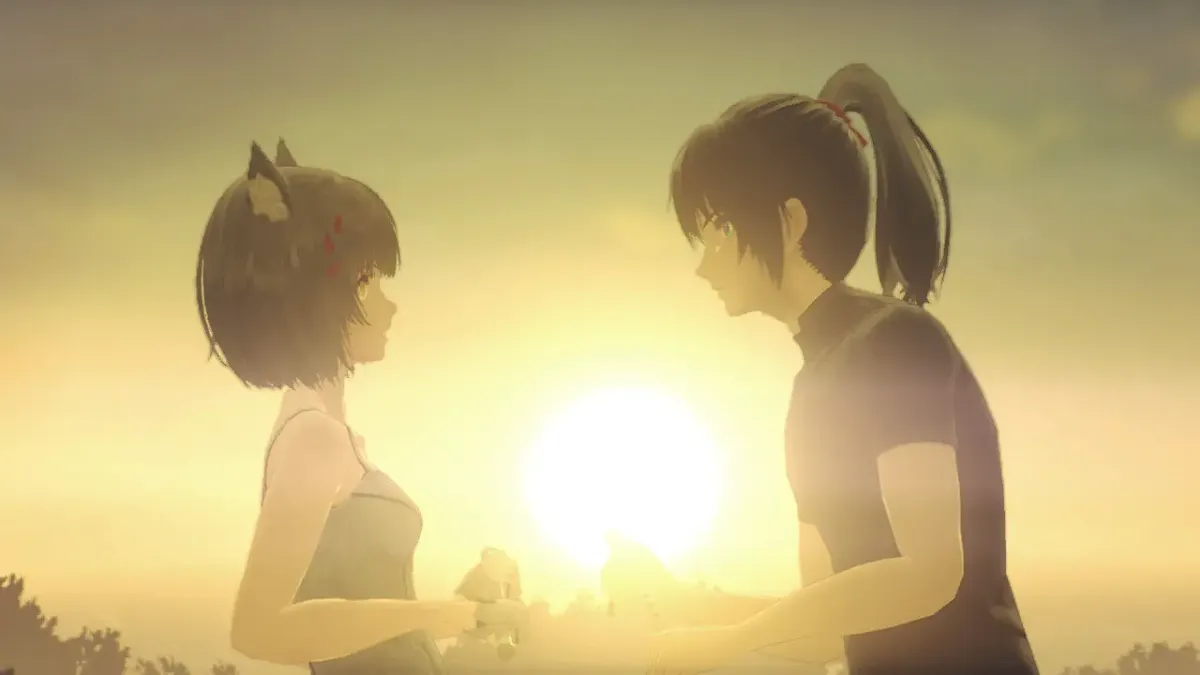
Aionios is a world eternally at war. Colonies of Keves and Agnus fight to steal each other’s very lives and fill their Flame Clocks to live just one moment longer. The soldiers live a mere 10 years, but spend every waking moment fighting for their queen. Six soldiers, three from Keves and three from Agnus, clash on the battlefield. But in a twist of fate, they are made Ouroboros by a mysterious man from neither nation. No longer bound by the Flame Clocks, they set out for the land pierced by a great sword to discover the meaning behind their new powers, and free the world from the cycle of violence.
Xenoblade Chronicles 3 is the fourth game in the series, and it wears that badge proudly. It takes the best parts of the titles that came before it, refines them to a sheen, and adds its own, unique spin on everything. There are returning characters, references, and elements mostly from Xeboblade Chronicles 1 and 2, but exploration and combat also take a few pages from Xenoblade Chronicles X for good measure. All of this adds up to one of the best games on Switch, and quite possibly the greatest game in the series so far.
The story follows Noah, a timid soldier from Keves who serves as an Off-Seer; someone who plays music to guide the spirits of the departed onward. He’s the protagonist and we mostly see the story through his eyes, but Xenoblade 3 really feels more like it has an ensemble cast. Mio, the female lead, obviously gets just as big of a spotlight as Noah, but the whole party has a lot of time spent on them throughout the plot. As Noah, Mio, Sena, Eunie, Lanz, and Taion all slowly open up to each other they learn to support the group as a whole and individually in their own ways.
I’m being intentionally vague here so as not to spoil anything, but they’re all incredibly memorable and relatable. Eunie’s sass is infinitely entertaining, but she usually knows when to lay off and be more sincere. Taion can be distant and calculating, but also has a softer side. Lanz and Sena are both meat heads who also have imposter syndrome and survivor’s guilt. All of their stories affected me deeply, and that’s not even going into the overall plot which takes a lot of JRPG tropes and actually explores them thoughtfully – this game has some actual pathos and artistic intention. If you’re familiar with Perfect Works and games of that story concept (especially Xenogears), this feels like the best realization of that so far.
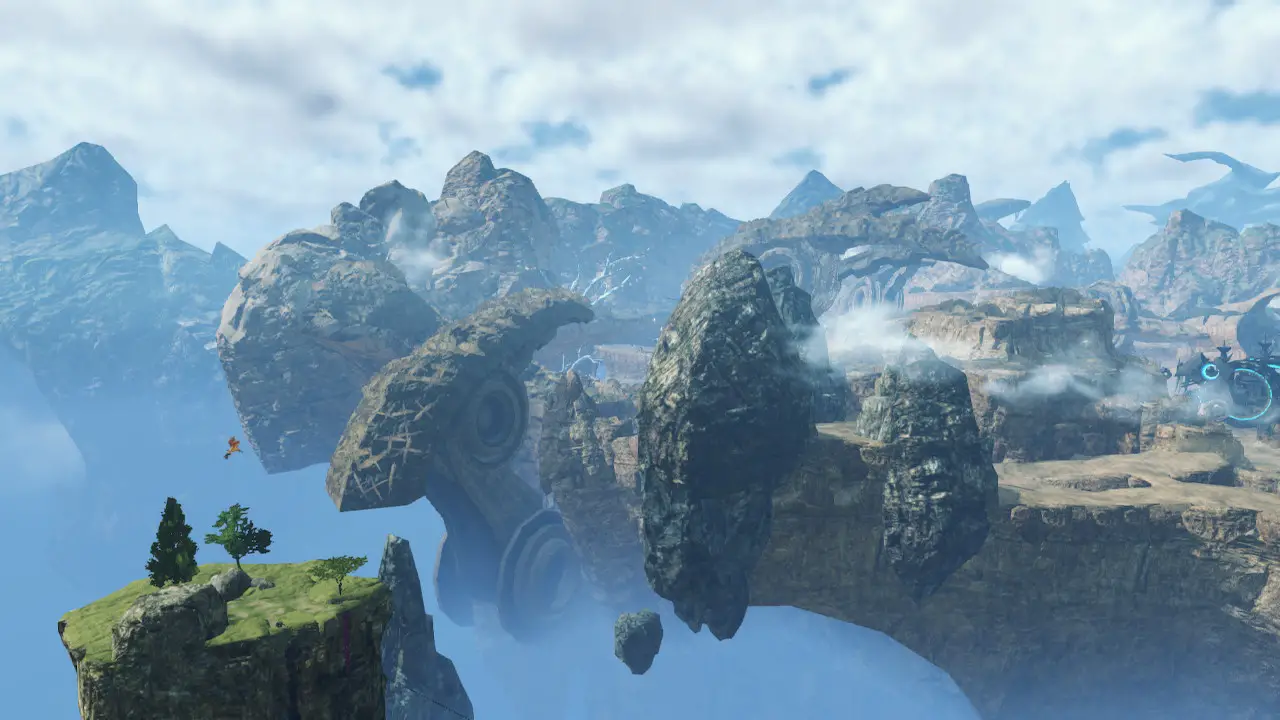
The main story, characters, and romance are all excellent, but I can easily say the same about most of the side content as well. As you progress through the game, you’ll free colonies from Flame Clocks and unlock a bunch of side quests there. All of these are essentially about what the people do now that they don’t have to fight, but each has its own unique story and themes to explore. Colony 9 learns to live off the land while also accepting support from their former enemies, while Colony Gamma sees the party take on a teaching role for the new recruits. Every single side quest in these areas contributes to the greater whole that is the colony’s story, making every location incredibly memorable.
On your way to Swordmarch and beyond, you’ll engage in combat against monsters as well as the Agnian and Kevesi forces hunting you. Combat is something of a mix between Xenoblade 1 and 2. Battles take place seamlessly in the open world, simply target a foe with L and R and press A to draw your weapon. You control one character at a time, though you can swap at any time by holding ZL and pressing L or R. You can move your currently controlled character around, but you need to stand still to begin auto-attacking. Starting off the game, you can assign three arts to X, Y, and B with a Talent Art on A. Arts can be attacks like Edge Thrust, which deals more damage at the target’s rear, buffs such as Maximum Voltage to make subsequent attacks hit harder and be unblockable for a short time, area of effect heals like Group Heal, and much more. Once an art has been used, it enters a recharge period and will be unavailable until either a cooldown period has passed for circle arts or after a certain number of auto-attacks with diamond arts.
To make arts more effective, you’ll want to cancel out of auto-attacks when using them. To do this, you wait until the moment your character hits the enemy to press the button; a successful cancel is shown with a white circle extending from your character. Initially, you can only cancel out of auto-attacks but you’ll eventually be able to cancel arts into each other for combos.
Once the party become Ouroboros, which we’ll get back to in a bit, and come together, you’ll unlock the Class system to customize everyone to your liking. Classes come in three varieties which determine your role in battle: Attacker, Healer, and Defender – the MMO holy trinity. Your entire party of six takes part in battles at all times, so you’ll want to divide roles up evenly with two each because Healers are actually useful and fun to play as this time around. Leveling up a class will allow that character to take arts and skills to use in other classes. For example, Noah starts as a Swordfighter which, at the initial cap of rank 10, masters Shadow Eye to remove half of your agro (basically how much the enemy wants to kill you) and increase the user’s attack. If he then switches to Taion’s Tactician class, he can equip Shadow Eye as a Master Art, assigned to up, right, and down on the d-pad, and use it as a healer.
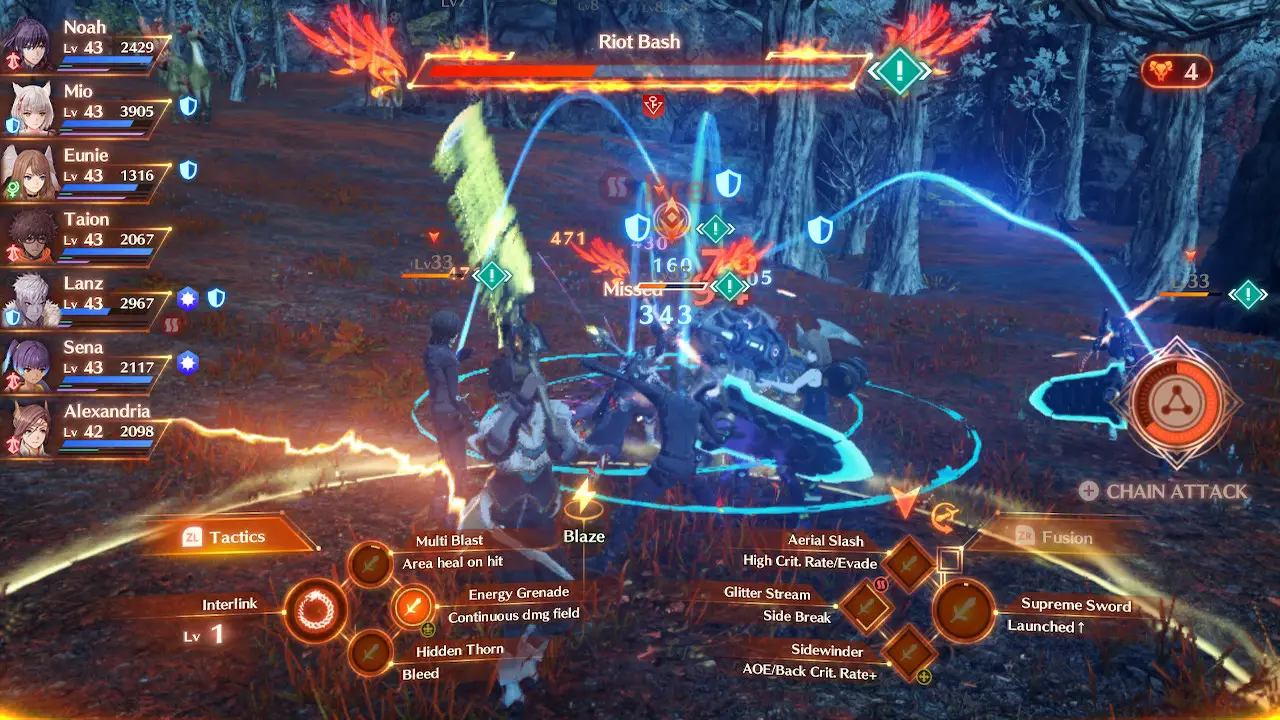
Master Arts add even more potential in combat. While Master Arts must be the opposite shape of your current class (Keves classes use circle arts while Agnus uses diamonds), they allow you to greatly customize each character to your liking. When you have two arts assigned in opposing slots, you can hold ZR and press the assigned face button to fuse them, having both arts go off at the same time. Fusion Arts will always use the animation of the class art, so if a Master Art takes too long to use or is difficult for you to cancel out of, you can rely on Fusion Arts to get the best of both worlds. You will want to be careful with their use, as they initiate recharge on both arts, but before you unlock full canceling you can cancel a normal art into a Fusion Art then back into another normal art and even further into your talent art, so it’s fun to go nuts.
Talent arts are specific to each class and can be incredibly powerful. Unlike other arts, Talent Arts need to be filled up before they can be used, and you do that by performing actions appropriate to your role. Attackers fill up the gauge by landing critical hits, correctly performing position attacks, and generally dealing damage. Healers need to heal and buff their allies while debuffing the enemy. Finally, Defenders must keep enemies’ attention on them to protect everyone else while guarding and dodging attacks. Talent Arts include things like Mad Taunt to draw the attention of all nearby foes, Gemini Strike to avoid attacks while dealing AOE damage, Raging Force which deals massive damage at the cost of all art cooldowns, Tidal Wave to heal allies while attacking, and many more. Some characters do have unique talent arts you can swap class talents for, and once a class hits rank 20 after completing the associated character’s quest you can freely use it on other classes.
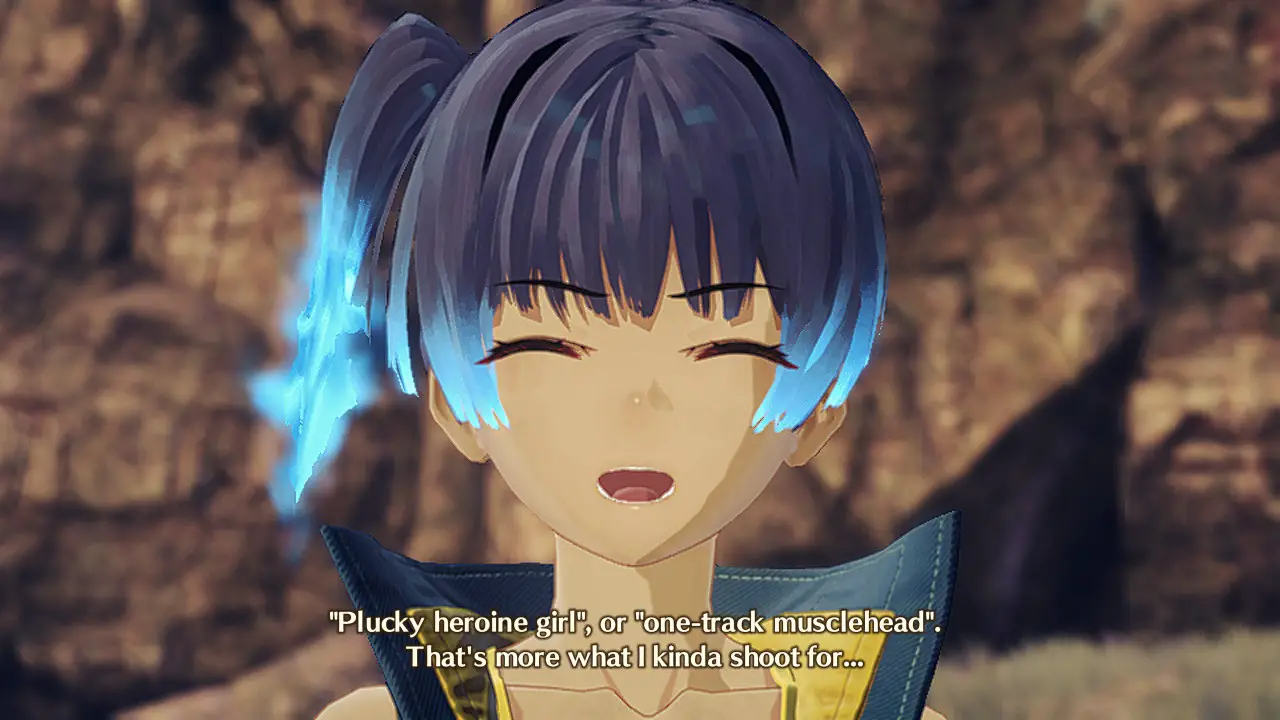
Speaking of associated characters, freeing certain colonies in the story, some optional colonies, or even just completing certain side quests will have Hero characters join your party. Heroes can accompany you as a seventh party member on the field, but will also grant their class to a single member of the main party. To unlock the class for everyone else, they need to fight alongside the inheritor for a while as they gain Class Points, or CP. Depending on their compatibility with both the class and the character using it, some people will learn classes faster than others. Classes not only come with arts, but also passive skills to equip. Some are minor like a simple defense increase, but others can be game changers like a 30% chance to keep an art even after use. The class system is incredibly fun and has just enough restrictions to make you think through your choices while still feeling super customizable. You can’t exactly make a single character an invincible god like in X (well, you CAN, but in a way that feels like an unintended exploit), but creating a team that works together to excel in all fronts is very satisfying.
Unfortunately, this is where we run into a bit of a problem that, admittedly, is one somewhat of my own doing. You see, I am mystically compelled to fully complete the Xenoblade Chronicles games. I have 100%-ed the first game on the original Wii release, the 3DS Port, and of course the Switch remaster. I’ve come very close in X, 2, and Torna and still slowly chip away at them when I have time. Of course, I intend to do the same with 3 so I frequently took time off from the main story to explore, do side quests, and battle Unique Monsters. This left me consistently overleveled for basically everything all the time. This in and of itself isn’t a big deal as enemies can still pose a challenge when you’re 10 levels above them. The problem comes in CP scaling when fighting those enemies. You need to earn CP to both level classes and give other characters access to them, and while I could eventually get enough to reach rank 10 on the inheritor, the other characters were nowhere near learning the class for themselves without copious grinding.
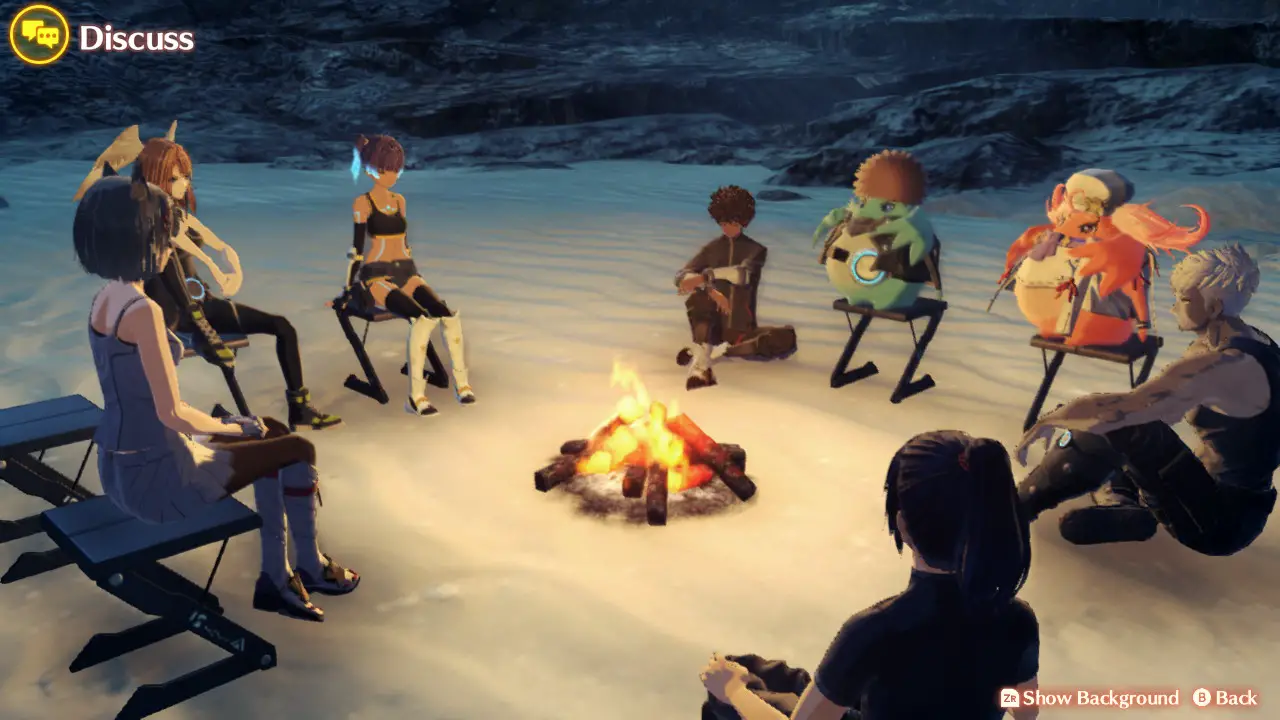
Usually the solution here would be to level down your party at a campsite, but for whatever reason you cannot do this until you beat the game. I still had an incredible time playing through the intricate story, but this is a frustration that bears mentioning. I plan on playing through the game in New Game Plus at more story appropriate levels, but if you’re going through the first time it may be prudent to lay off the side quests until certain points in the story.
Moving back to the combat, the Ouroboros are split into pairs when it comes to their powers consisting of Noah and Mio, Eunie and Taion, and Lanz and Sena. By pressing left on the d-pad, you and your partner can fuse to enter Ouroboros form – basically a big, tandem mech that allows the two to share memories and use powerful arts. While in Ouroboros form, you have three arts on the right side pallett, can swap which character’s form you’re using by pressing up or exiting with down, and the pair’s health bar is replaced with a heat gauge. You can’t take damage in this form, but the heat gauge will slowly increase over time and as you use arts, when it’s full you’re kicked out and can’t transform for a while. Other than that, this form is a super powered version of normal combat complete with arts to set and Talent Arts to build up. Of course, fusing essentially removes two party members from the field of battle so while it is powerful, using it at the wrong time could prove disastrous.
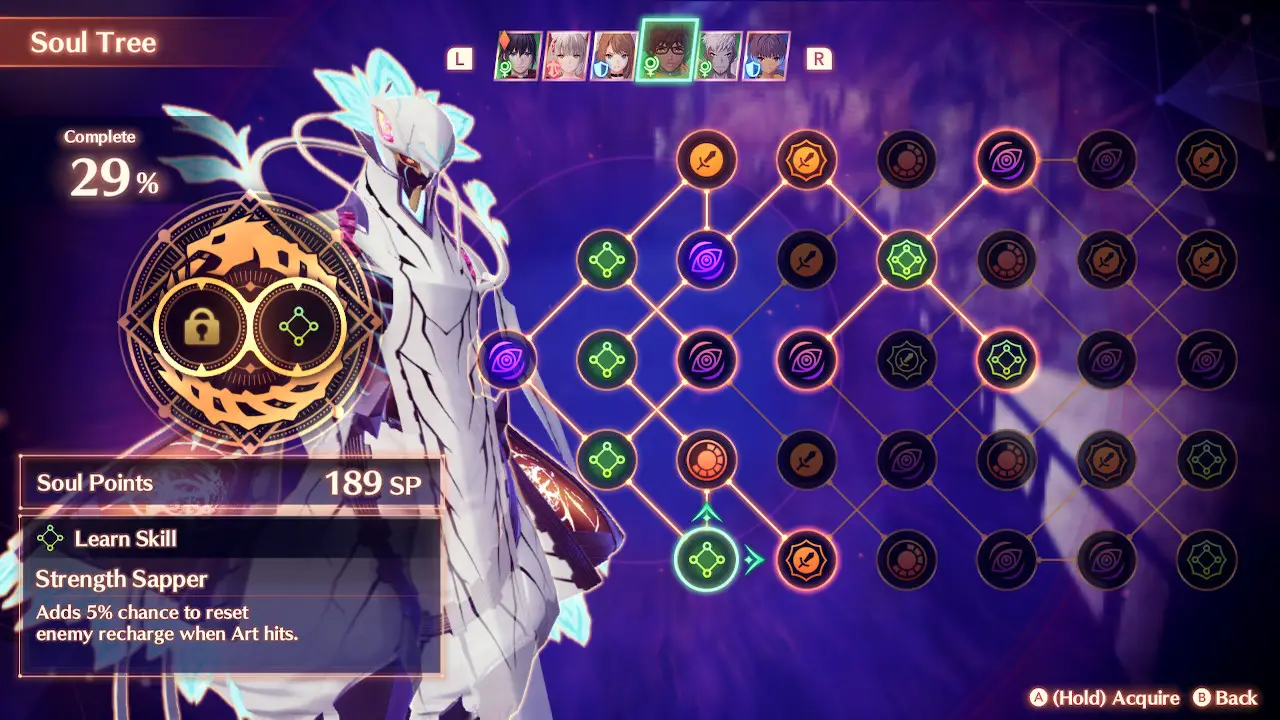
Certain fights and completing side quests will earn the party SP which can be spent in the Ouroboros skill trees to make them even more powerful. While there are the standard +10 to strength or dexterity nodes to unlock, you can also learn new arts, passive skills, and even art canceling in the form this way. As the pair of characters grow closer through completing their side stories, you’ll unlock two slots for each form which allow characters to borrow nodes from their partner. For example, Sena’s Ouroboros form is focused on dealing massive damage and stunning enemies with knockback, while Lanz’s is more tanky and able to draw enemies’ attention. Sena has a node that makes all of her knockback skills deal 50% more damage. Lanz also has some knockback arts, so taking that will allow him to do 50% more damage with those arts. It’s a neat system that emphasizes the pairs’ bonds, while not being too deep as to become overwhelming.
All this adds up to a fun and satisfying battle system that is constantly engaging throughout the 95 hours it took me to reach the credits and beyond. At the center of this system lies the Smash and Burst combos that force your party to synergize well to deal the most damage possible. Certain arts will inflict the break status on an enemy, symbolized by a circular meter next to their health bar. Once an enemy is broken, another character can topple them, knocking them to the ground and leaving them helpless. From there, you have two options: launch them then smash for a big burst of damage, or daze and burst them for extended vulnerability, removing any enrage statuses from bosses or Unique Monsters, and possibly having them drop some collectables to boot. Both are very useful, but take a lot of arts to perform – at least 4 for each route. Of course, you can be clever with your fusion and, for example, fuse a break move with a topple to get the first two steps done in one move. If you have both combos available to you, you can tell the AI to favor one route over another in the tactics menu with ZL (which you can still use to switch characters mid-battle) along with other tactics like preferring fusion arts, focusing on your targeted enemy, and regrouping around you.
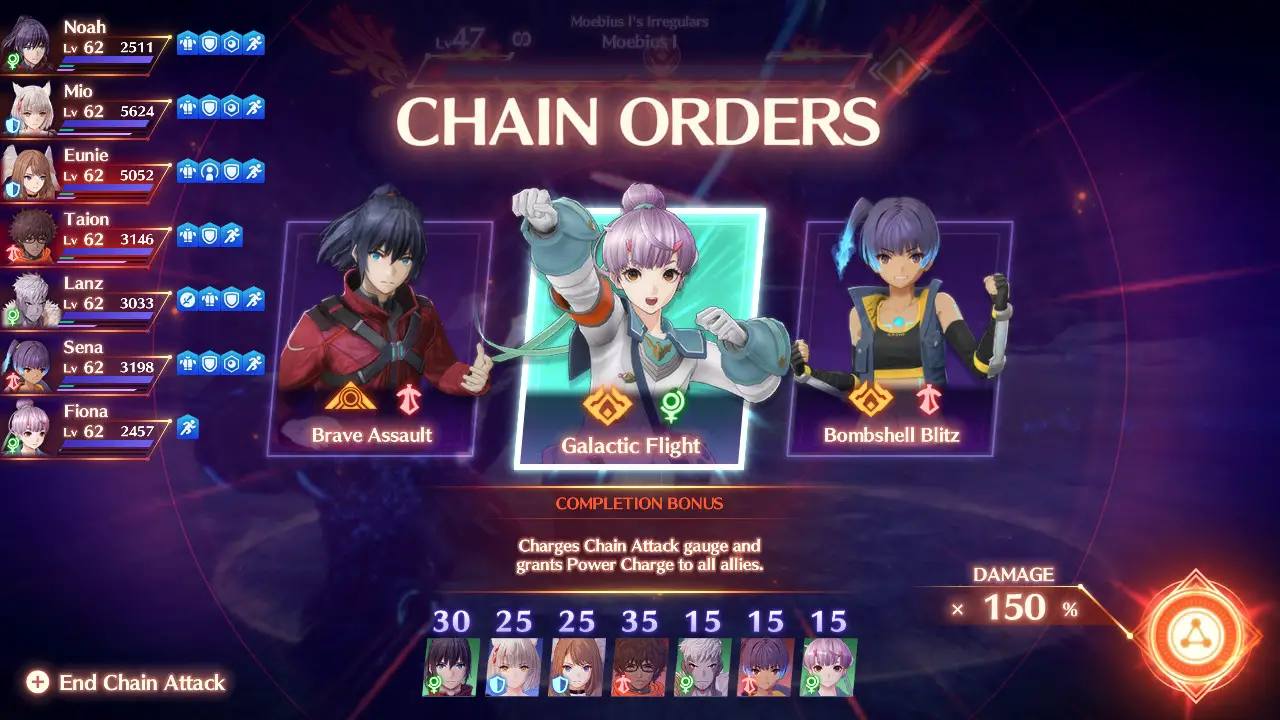
As the cherry on top, we have Chain Attacks. Once you fill up the party gauge, you can press plus to halt combat and have the party whail on your target. Before you can attack, however, you need to pick an Order. At the start of each round, you’ll be presented with a random selection of three orders from your party and the Hero. Orders consist of things like Sena’s making all attacks unblockable or Taion decreasing the enemy’s physical defense by a certain percentage. Once an order is in place, you can choose who will attack by selecting their portraits with the d-pad, then using a fusion art with the buttons (all arts are automatically fusion arts for free here). Your goal in each round is to reach 100 tactical points, or TP. Each character will contribute a set amount of TP by default, and attacking in a certain order or using an art that capitalizes on the situation can increase it exponentially. Once you reach 100, the Order finally comes into effect with that character performing a special attack. If there is still meter left in the party gauge, another round begins with you choosing another order until either you don’t reach 100, end the attack with Plus, or empty the party gauge.
Using a character in a chain attack will cause them to be unavailable for the next round, so you need to be smart about the order you use them in. A random character will reactivate between each round, but you’re still running a deficit here overall. However, reaching 150 and 200 will cause two or three characters to reactivate each round. In addition, activating an Ouroboros pair of characters’ orders in a single chain attack will grant you access to an Ouroboros order, which will reactivate everyone and end with a massively powerful combo using both Ouroboros forms. Killing an enemy in a Chain Attack will activate Overkill mode, where all subsequent damage will increase your EXP and CP gain starting at 200%, another reason I became super overleveled. You can turn this off in the options (which is fully featured for a Switch exclusive game, Nintendo take note), but it’s just so satisfying. I do wish you could turn off the music specific to chain attacks in favor of normal boss and battle themes, but it’s still a banger regardless.

Xenoblade Chronicles 3’s music takes a very different approach from the previous games. Instead of being big and bombastic, most of the area themes are much more somber, conveying the desperate state of the world. Of course, there’s still beauty to be found all over, and the music still somehow reflects that. When it’s time for battle, you’ll hear some of the most hype tracks the series has to offer, so it’s a win win. The choice of the flute as the main instrument makes each tune memorable. Especially in The Weight of Life, which is used as a cutscene track, where the flute only comes in after the party has somehow turned around an impossible situation. This track also uses leitmotifs from two similar tracks in 1 and 2, with the flute coming in signifying these characters making themselves distinct from the series past, while also acknowledging where they came from. This game uses a LOT of leitmotifs, so I would encourage you to keep an ear out as recognizing them can really add to the story.
Likewise, the voice acting is excellent. These kids sure know how to scream and cry convincingly, so no awkward moments like Rex at the beginning of 2 to mar what is otherwise a fantastic performance. I will say that post battle dialogue can be grating at times as there simply aren’t enough lines to last through a game like this. I can only hear how Sena is the girl with the gall so many times.
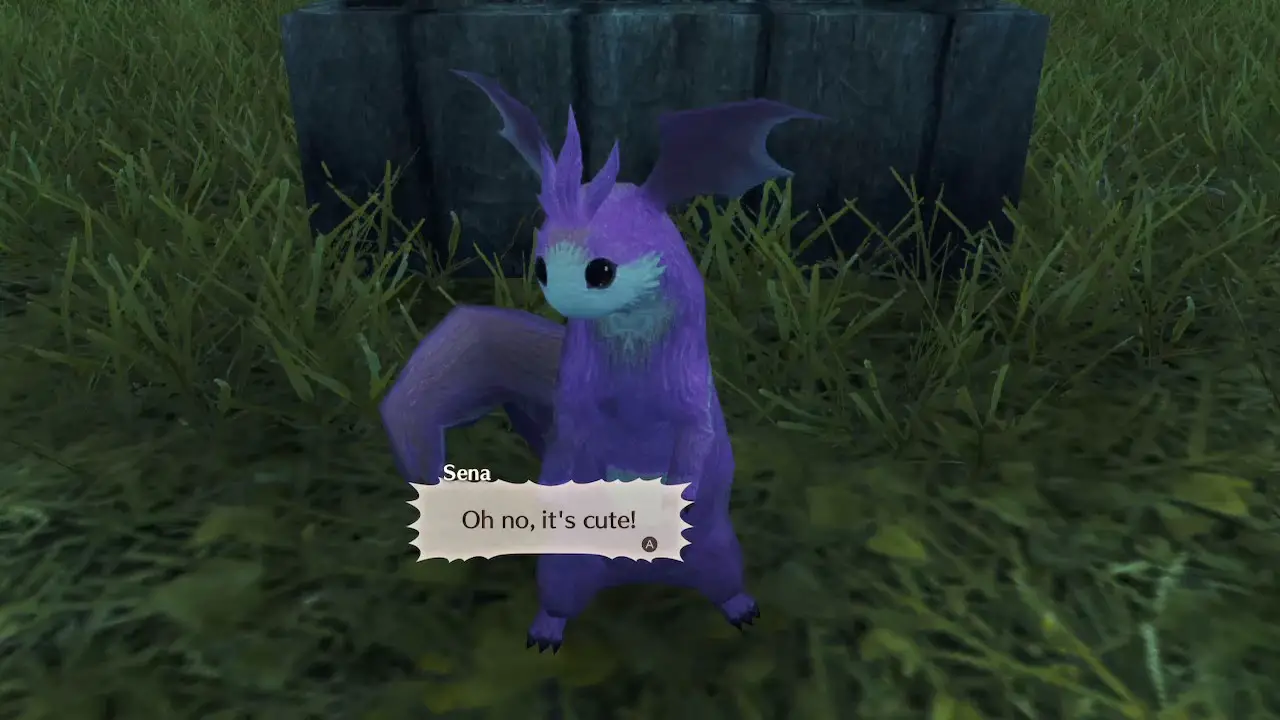
Of course, what’s a Xenoblade game without massive areas to explore? Xenoblade 3’s areas are massive, even when compared 1 and 2. While those games’ locations had a general path the game would take you through on the story, 3 adopts the X approach and places you in a large, open zone with only a destination marker to guide you; how you get there is usually up to you. If you prefer more linear exploration or just want to get on with the story, you can activate a glowing line using the shortcut menu by holding ZL and pressing the assigned button. This will show you the fastest route to your currently tracked quest, but it’s not always the safest. Remember, there are enemies of all level ranges from 10 to 200 in just about every area. The game isn’t a true open world, with huge maps sectioned off from one another, but loading in between them is fairly short, taking at most 10 seconds.
When you enter a new area, your map is completely blank leaving you to fill it out as you explore and discover landmarks. There’s so much to discover in fact, that zooming all the way out will just become a jumble of skip travel icons unless you turn them off. There are entire Colonies and storylines to discover just waiting off the beaten path, so it’s well worth your time to explore every nook and cranny. Incentivising this are of course materials to pick up littered around, as well as treasure chests and dead soldiers to send off. Treasure chests are self explanatory, but seeing off deceased soldiers will deepen your relationship with nearby colonies, unlocking permanent exploration buffs like extending the range materials magnate towards you or increasing your movement speed. Some materials allow you to craft gems, equipable upgrades, and cook at camp for food buffs courtesy of Riku and Manana respectively, while others are needed for quests. While you’re at a rest spot, either one in a colony where you can order food or a campsite in the wilderness, you can craft and cook or use bonus XP to level up, save the game (you can save anywhere still), and even clean the party’s clothes because they will get very dirty.
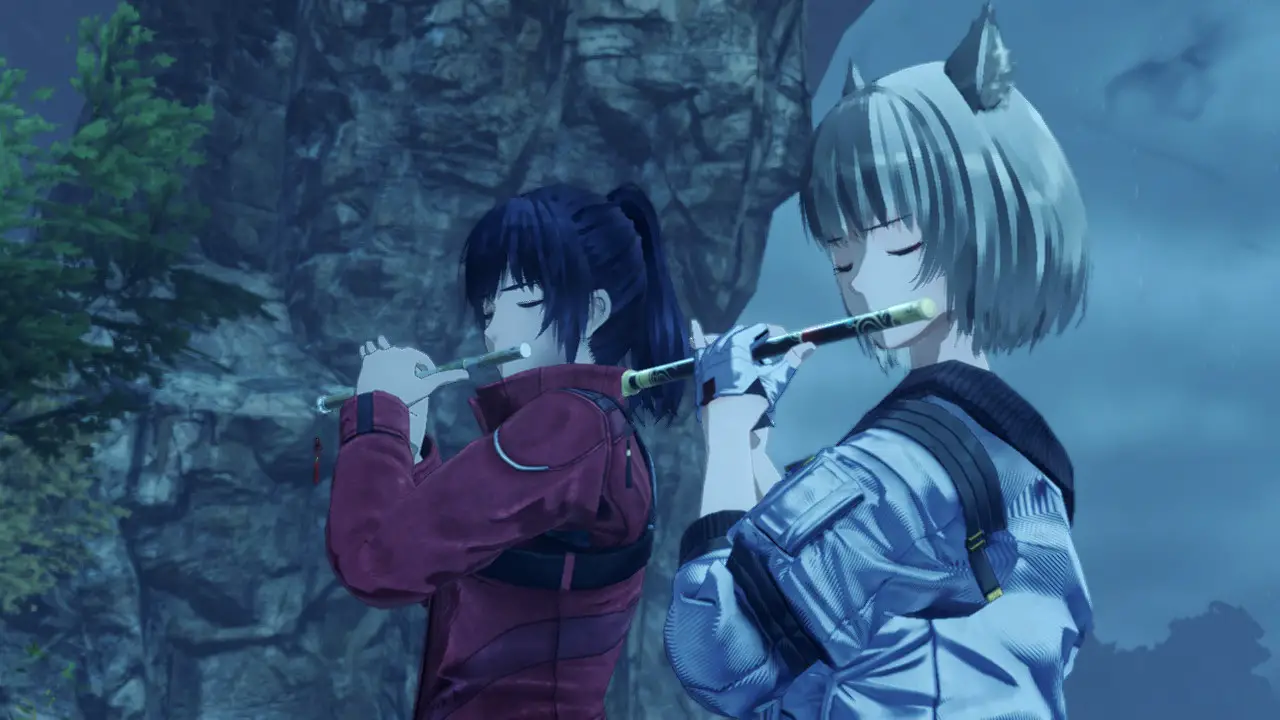
Also at camps, you can discuss rumors you’ve heard by observing conversations marked with yellow exclamation points. These can simply be a funny or heartwarming conversation between the group, or even lead to even more quests. This really makes it feel like all aspects of the gameplay, story, and characters are inextricably linked. The game flows together to become something more than the sum of its parts. The individual parts are all excellent, but put together they become one of the most engaging pieces of media I’ve ever experienced.
Xenoblade Chronicles 3
Excellent
Xenoblade Chronicles 3 gracefully fuses story and gameplay in a masterful conclusion to the Klaus saga. It draws from earlier games in ways that will satisfy long time fans, while also firmly establishing its own world and characters. Aionios is a beautiful world to explore, with a rich history and fascinating conflict. The characters that stand at the center of this tale are some of the deepest, most relatable people in gaming history with a fantastic english dub backing them up. This is a game that will keep you engaged for hundreds of hours, and even stick with you well after.
Pros
- Incredible story
- Deep and rewarding combat system
- Fantastic music and voice acting
- A massive world to explore
- Side quests matter
Cons
- Level curve can be uneven depending on how you play
- Post battle dialogue is repetitive
